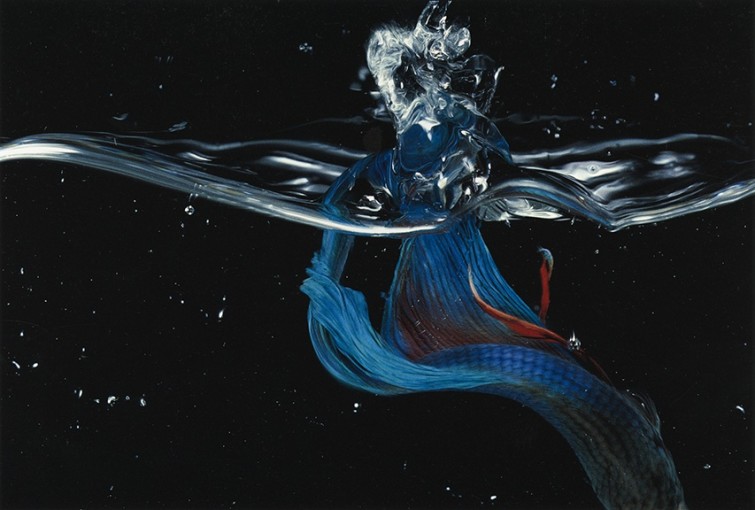The legendary photographer’s series Fighting Fish comprises of 24 colour images of Siamese fighting fish, which Hiro photographed in a tank in his studio. The images make an astonishing visual statement of the ferocity of animals. Hiro sees beauty in the extraordinary, and this is evident in his Fighting Fish pictures. In this body of work, taken over ten years, Hiro marvels at the notion of survival in the battles of the fish, discovering beauty where one could not imagine finding it. Traditionally, these scenes would present no aesthetic, however Hiro’s genius is in discovering what others would not.
The animals are reacting as nature tells them and thus are unreceptive to the photographer’s arrangement. The speed at which the fish engage in their fighting can cause them to become indistinguishable from one another. Before a fight, the animals are particularly magnificent – their colours vivid, mouths open, gills expanded, eyes bulbous, undulating fins and tails falling victim to deadly bites from the opponent. Susanna Moore, in her essay for Fighting Fish/Fighting Birds comments: “The sensual fish are emblematic and even illuminating. Nature, in the end, whether it manifests itself in the seductive display of beauty that in the fish is both solemn and gaudy… will always have its way. Nature is unsentimental…so too are these photographs…One does not feel pity or revulsion looking at them, but a kind of humble recognition… We are not the fish. But we are, as are the fighting fish…governed by our own dance of survival.”





